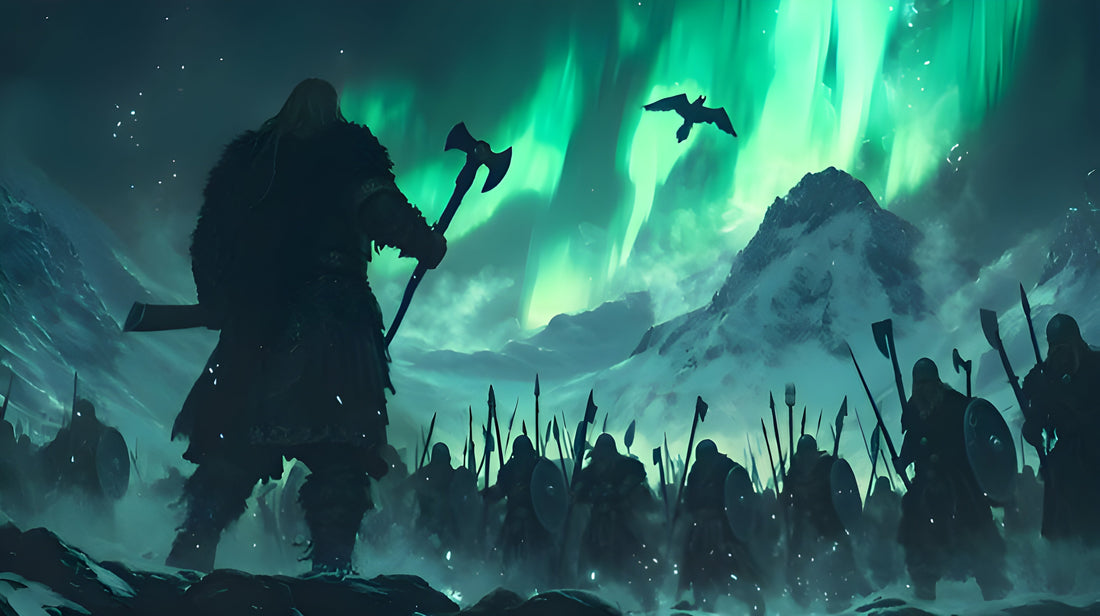
Viking Culture and Gods
Share
The Allure of Viking Culture and Norse Gods
For centuries, the word “Viking” has conjured images of mighty warriors, majestic longships, and a vast pantheon of fascinating deities. Modern pop culture has revived an interest in these ancient Northern Europeans—yet their genuine beliefs and way of life remain even more captivating than the legends. Whether it’s the mysterious runes etched on a pendant or the fabled stories of gods like Odin, Thor, and Freya, the essence of Viking culture and Norse mythology continues to intrigue enthusiasts worldwide.
A Glimpse into the Viking World
The Vikings were seafaring people from the late 8th to early 11th centuries, primarily originating from Scandinavia (present-day Denmark, Norway, and Sweden). Renowned for their nautical prowess, they embarked on voyages of exploration, trade, and sometimes plunder. However, beyond the stereotypes of horned helmets and raids, Vikings had a complex social structure, with strong community ties and flourishing trade networks that spanned Europe, the Middle East, and even parts of North America.
A Culture of Honor and Storytelling
Central to Viking life was a code of honor, loyalty to one’s clan, and courage on the battlefield. They also prized storytelling as a way of preserving their heritage. Skalds (Norse poets) crafted verses recounting heroic deeds, myths, and sagas that have survived in texts like the Prose Edda. These works paint vivid pictures of the Norse gods and the cosmic dramas that shaped their worldview.
The Norse Pantheon: Gods of Myth and Legend
Viking spirituality was polytheistic, featuring a pantheon of powerful and often flawed gods and goddesses. Each had distinct personalities and domains, reflecting the values of a culture shaped by harsh climates and seafaring challenges.
- Odin: The All-Father, known for his relentless pursuit of wisdom. He sacrificed his eye to gain knowledge of the runes and is often depicted with ravens (Huginn and Muninn) perched on his shoulders.
- Thor: The mighty god of thunder who wields the hammer Mjölnir, a symbol of protection and courage. His duty is to guard both gods and humans against giants and other threats.
- Freya (Freyja): A goddess of love, beauty, and fertility, yet also associated with war and death. She is said to receive half of those who fall in battle, sharing the slain with Odin.
- Loki: A trickster god who is both cunning and mischievous, forever testing the patience of gods and humans alike.
Symbols and Runes in Jewelry
The runes—the Viking alphabet—were believed to hold magical properties and were often inscribed on weapons, stones, and personal items for protection or good fortune. Today, these symbols can be found in Nordic jewelry to represent strength, resilience, and a deep connection to ancestral heritage. From the Valknut (a symbol linked to Odin) to the Helm of Awe (Ægishjálmur) believed to bestow fearlessness, these designs carry a piece of ancient wisdom into the modern world.
Bringing Viking Heritage into the Present
Whether you’re captivated by the epic myths of the Norse gods, enthralled by the runes’ hidden meanings, or simply drawn to the aesthetic of Viking-era art, incorporating these symbols into daily life can be a powerful way to honor the past. At our store, we curate jewelry that pays homage to the bold spirit of Viking explorers and the mythic universe they believed in. Each piece tells a story—much like the skalds of old.
Explore Our Viking-Inspired Collection
If you feel the call of the Norse gods and want to express your affinity for Viking culture, explore our Nordic jewelry collection. From Thor’s hammer pendants to rune-engraved rings, every item is crafted with attention to detail and reverence for the mythic heritage that continues to inspire people around the globe.
